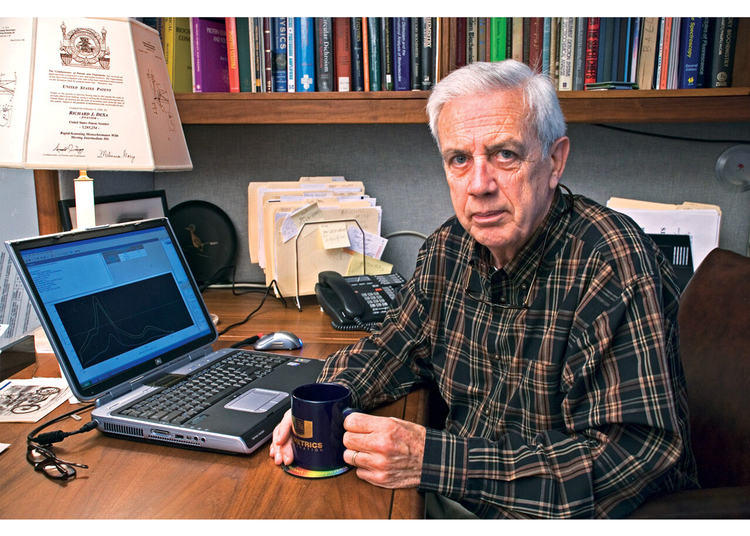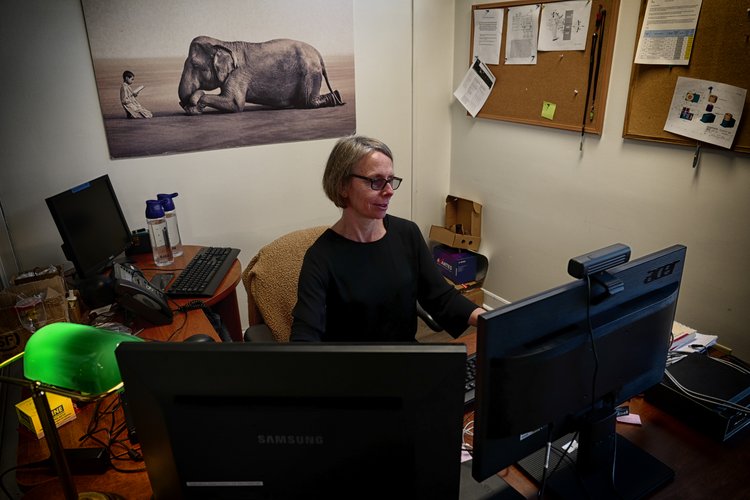Circularly Polarized Luminescence - The Facts
Circularly Polarized Luminescence - The Facts
Blog Article
All about Circular Dichroism
Table of ContentsThe Main Principles Of Uv/vis About Uv/vis/nirLittle Known Facts About Spectrophotometers.An Unbiased View of Uv/vis/nirExcitement About Uv/vis

Spectrophotometry is a tool that hinges on the quantitative analysis of molecules depending on how much light is absorbed by colored compounds.
Getting The Circular Dichroism To Work
A spectrophotometer is typically used for the measurement of transmittance or reflectance of solutions, transparent or nontransparent solids, such as refined glass, or gases. Although lots of biochemicals are colored, as in, they take in noticeable light and therefore can be measured by colorimetric treatments, even colorless biochemicals can typically be converted to colored compounds suitable for chromogenic color-forming reactions to yield compounds ideal for colorimetric analysis.: 65 Nevertheless, they can likewise be developed to determine the diffusivity on any of the listed light varieties that generally cover around 2002500 nm using different controls and calibrations.
An example of an experiment in which spectrophotometry is utilized is the determination of the stability constant of a solution. A certain chain reaction within a service might happen in a forward and reverse instructions, where reactants form products and items break down into reactants. At some time, this chain reaction will reach a point of balance called an equilibrium point.
An Unbiased View of Uv/vis/nir
The quantity of light that goes through the solution is indicative of the concentration of specific chemicals that do not permit light to travel through. The absorption of light is because of the interaction of light with the electronic and vibrational modes of particles. Each kind of particle has an individual set of energy levels associated with the makeup of its chemical bonds and nuclei and hence will absorb light of particular wavelengths, or energies, resulting in unique spectral residential or commercial properties.
They are widely utilized in numerous markets consisting of semiconductors, laser and optical manufacturing, printing and forensic assessment, as well as in laboratories for the research study of chemical compounds. Spectrophotometry is often utilized in measurements of enzyme activities, decisions of protein concentrations, determinations of enzymatic kinetic constants, and measurements of ligand binding reactions.: 65 Eventually, a spectrophotometer is able to figure out, depending on the control or calibration, what compounds are present in a target and precisely how much through computations of observed wavelengths.
Created by Arnold O. Beckman in 1940 [], the spectrophotometer was developed with the help of his associates at his business National Technical Laboratories founded in 1935 which would become Beckman Instrument Company and eventually Beckman Coulter. This would come as a service to the previously developed spectrophotometers which were unable to take in the ultraviolet properly.
Not known Facts About Circular Dichroism
It would be found that this did not offer acceptable results, therefore in Model B, there was a shift from a glass to a quartz prism which enabled much better absorbance results - spectrophotometers (https://www.indiegogo.com/individuals/36812837). From there, Model C was born with a modification to the wavelength resolution which ended up having 3 systems of it produced
It irradiates the sample with polychromatic light which the sample absorbs depending on its properties. Then it is transmitted back by grating the photodiode selection which discovers the wavelength region of the spectrum. Since then, the creation and execution of spectrophotometry gadgets has increased exceptionally and has become one of the most innovative instruments of our time.

The Of Spectrophotometers
Historically, spectrophotometers use a monochromator consisting of a diffraction grating to produce the analytical spectrum. The grating can either be movable or repaired. If a single detector, such as a photomultiplier tube or photodiode is used, the grating can be scanned stepwise (scanning spectrophotometer) so that the detector can measure the light intensity at each wavelength (which will represent each "action").
In such systems, the grating is repaired and the strength of each wavelength of light is measured by a different detector in the array. When making transmission measurements, the spectrophotometer quantitatively compares the portion of light that passes through a referral option and a test service, then digitally compares the intensities of the 2 signals and calculates the portion of transmission of the sample compared to the referral click here for more info requirement.

Report this page